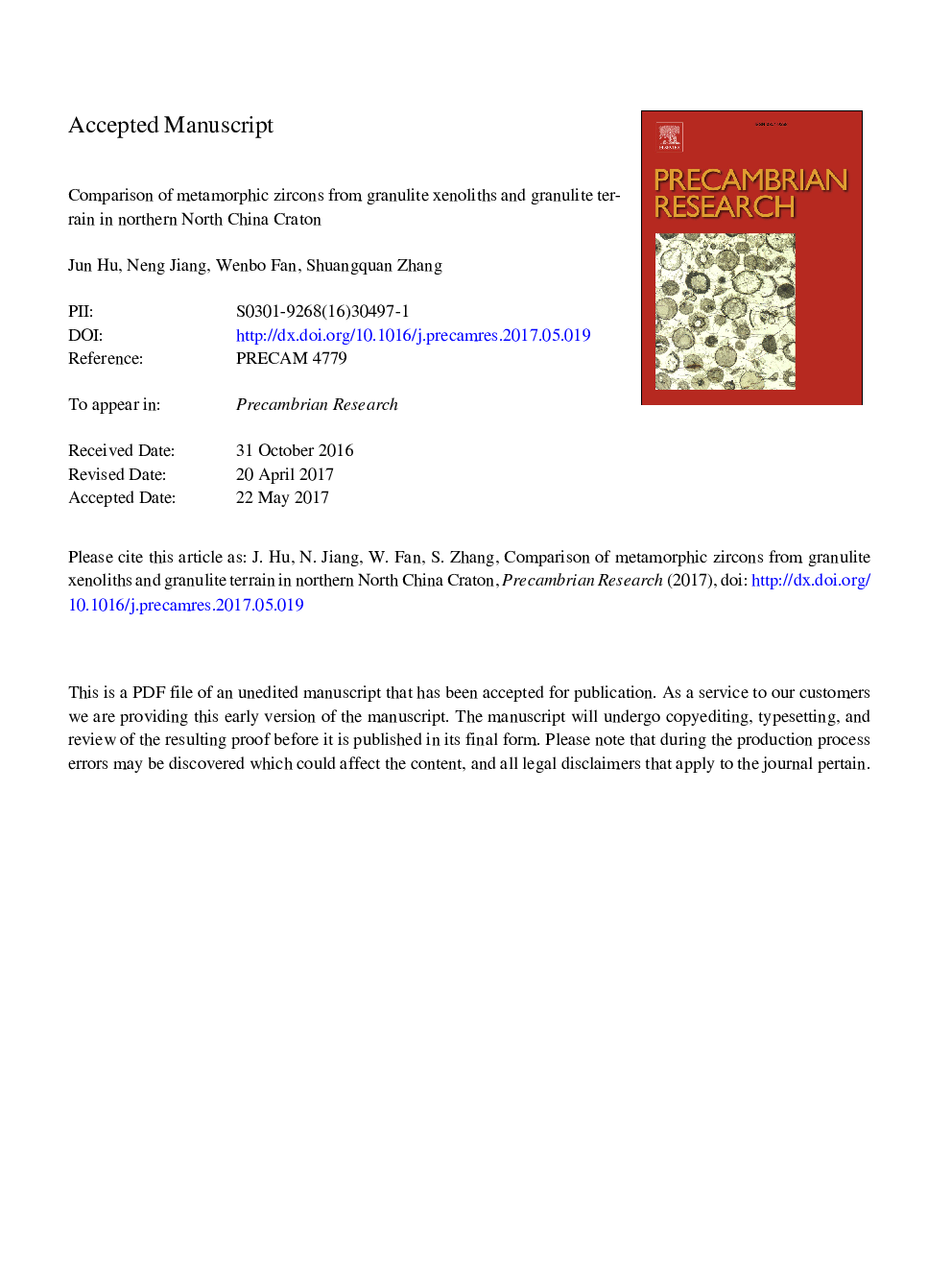| Article ID | Journal | Published Year | Pages | File Type |
|---|---|---|---|---|
| 8912739 | Precambrian Research | 2017 | 50 Pages |
Abstract
We conduct a study of petrography, geochronology, trace element and Hf isotope compositions on zircons from granulite terrain and granulite xenoliths in the Zhangjiakou region, northern North China Craton. Most zircons from both types of granulite have core-rim structure in their CL images. All the magmatic zircon cores yield essentially identical â¼2.5Â Ga ages, whereas metamorphic zircons yield ages of â¼1.85Â Ga and 120-140Â Ma, respectively. Most the â¼1.85Â Ga metamorphic zircons have Th/U ratios lower than 0.4 with a range of 0.01 to 0.63. However, the range of Th/U ratios of Mesozoic (120-140Â Ma) metamorphic zircons (0.12-3.48) overlaps that of the magmatic zircons (0.12-2.44). The Mesozoic and â¼1.85Â Ga metamorphic zircons have REE patterns consistent with magmatic zircons, except that the â¼1.85Â Ga ones show less enrichments and much less negative Eu anomalies than those of magmatic zircons. Therefore, Th/U ratios and the REE patterns cannot be used to distinguish metamorphic zircons from magmatic ones. The â¼1.85Â Ga metamorphic zircons, however, have lower formation temperatures, oxygen fugacity and 176Lu/177Hf ratios than the Mesozoic ones. We speculate that the â¼1.85Â Ga metamorphic zircons represent newly grown zircons coexisting with garnets and melt/fluid while the Mesozoic metamorphic zircons were formed quickly without the presence of garnet. The Mesozoic metamorphic zircons vary in their origins; some of these zircons were metamorphic newly grown while the others experienced recrystallization from a U-depleted melt/fluid. Our results suggest that P-T conditions, the melt/fluid and oxygen fugacity play important roles in controlling the trace element distribution and Hf isotope compositions of metamorphic zircons in the granulites.
Related Topics
Physical Sciences and Engineering
Earth and Planetary Sciences
Geochemistry and Petrology
Authors
Jun Hu, Neng Jiang, Wenbo Fan, Shuangquan Zhang,
